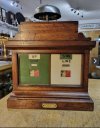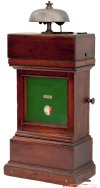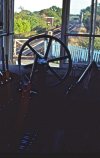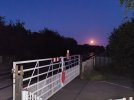One particular issue with remote crossing keeper cottages was a considerable lack of building services (apart of course from the block bells wired in to the adjacent lineside telegraph poles. No mains water or sewage, sometimes no electricity to the end, so oil lamps. The building itself would look quite a respectable house in suburbia, but would have had little or no updating from when the line was built. They likely got a circuit telephone to adjacent signalboxes, but no public telephone. This issue, to a lesser extent, also afflicted the sale of fine old station buildings etc at closed, remote stations.
Ivo Peters' films of the Somerset & Dorset in the 1960s show the water being delivered, in small-sized milk churns, from the local pick-up freight to the crossing keeper at Cockmill Crossing, middle of nowhere on the Highbridge branch. Nowadays in the centre of the Glastonbury Festival site.
The Cromford & High Peak line in Derbyshire in that late era was one step forward, and used redundant steam locomotive tenders to supply loco shed-style water tanks, several thousand gallons at a time, at their crossing keeper cottages. Presumably "Not Drinking Water", to quote the old legend over train toilet sinks.







